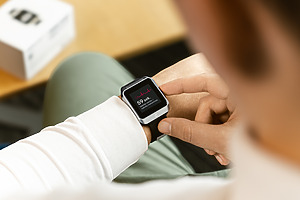Teltonika’s TeltoHeart, a multifunctional smart wristband system, developed in cooperation between the Lithuanian industry and universities has been given the CE MDR (Class IIa) medical device certification. This approval confirms that the product meets the comprehensive quality standards for medical devices and opens up new markets worldwide for this innovative product.
“This is an important recognition that we have been working towards since the start of this project in 2020. The CE MDR certification proves that TeltoHeart is a safe and reliable product that delivers correct medical data. It allows our clients – medical institutions – and their patients to safely use the device to analyse data and make diagnoses. In addition, we will now be able to sell the TeltoHeart wristband in the European Union and many other countries around the world,” says Martynas Osauskas, CEO of Teltonika Telemedic.
The system used in this product creates a new paradigm in wearable device diagnostics. According to the creators of the innovative device, it is the world’s first wrist-worn device combining photoplethysmogram (PPG) based long-term monitoring with an integrated 6-lead electrocardiogram (ECG). This multifunctional device system effectively detects atrial fibrillation despite the frequent occurrence of single or multiple premature contractions or other less dangerous types of arrhythmias. In terms of technical capability and functionality, it is unique and likely unmatched in the market.
“Our team specialises in solving similar challenges and continuously improves our solutions,” says Prof. Marozas.
TeltoHeart is a great example of how business can implement science-driven innovations to improve medical services and convenience for all users. The prototype algorithm for the device was developed by KTU researchers, with input from Vilnius University and Vilnius University Hospital Santaros Klinikos. Teltonika Telemedic, part of the Teltonika company group, has adapted the innovations developed by science to the needs of the telemedicine market and developed the TeltoHeart smart wristband with an ecosystem for both patients and physicians.
TeltoHeart is one of the newest and most advanced telemedicine products developed to meet the rapidly growing demand for certified wearable medical devices. Notably, the European Heart Rhythm Association (EHRA) has published an official recommendation in 2022 for patients who experience symptoms of cardiac arrhythmias less than once a week to use other certified wearable devices that can perform at least single-lead ECGs and/or detect arrhythmias using PPG technology instead of Holter monitoring.
TeltoHeart combines continuous cardiac monitoring by photoplethysmography, a proprietary atrial fibrillation detection algorithm, a 6-lead electrocardiogram and a design adapted to daily and continuous use.




